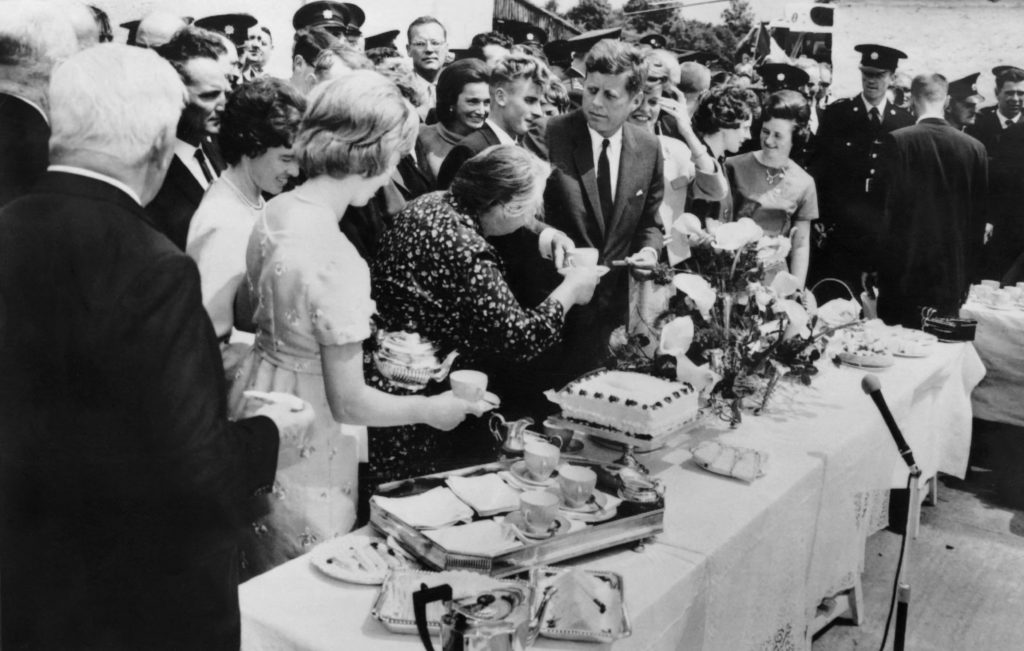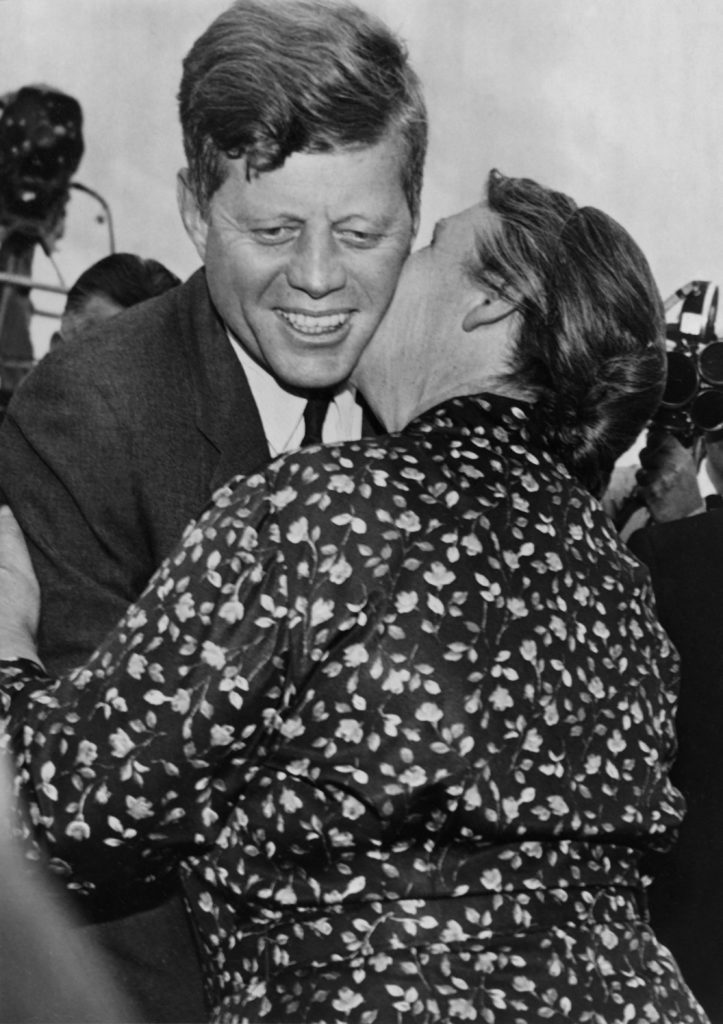IT was 60 years ago this month when US President John F Kennedy made his historic trip to Ireland.
On June 26, 1963 JFK arrived in the Emerald Isle on an emotional trip to his ancestral home.
It marked the first visit to Ireland by a US president, although eight more have visited since, most recently his fellow Irishman Joe Biden.
But JFK’s was a trip that was as special to the people of Ireland as it was to JFK himself, who was determined to trace his roots while in the country.
 US President John Fitzgerald Kennedy shares a lunch with his Irish family during his visit in Dunganstown, County Wexford, on June 28, 1963
US President John Fitzgerald Kennedy shares a lunch with his Irish family during his visit in Dunganstown, County Wexford, on June 28, 1963He met cousins in Wexford during his visit, which saw him hosted by then Irish President Éamon de Valera.
So enamoured with his ancestral homeland was JFK that in a speech made before he left, he promised to return.
He quoted a poem in that speech, which was written by De Valera’s wife Sinéad de Valera, who had performed the poem of exile for the President during dinner the previous evening.
He was so taken with it that he wrote it down, memorised it and recited it during his leaving speech.
The poem read: "'Tis the Shannon's brightly glancing stream,
brightly gleaming, silent in the morning beam.
Oh! the sight entrancing.
Thus return from travels long,
years of exile, years of pain
to see Old Shannon's face again,
O'er the waters glancing."
Upon completing the poem, Kennedy said: “Well, I am going to come back and see Old Shannon's face again, and I am taking, as I go back to America, all of you with me."
 JFK is kissed by his Irish cousin Mary Ryan during his visit in Dunganstown
JFK is kissed by his Irish cousin Mary Ryan during his visit in DunganstownBut sadly, he would never make that return trip as he was assassinated five months later.
This month the 60th anniversary of JFK’s historic Irish trip is being marked by the EPIC museum of Emigration.
The exhibition, at their Dublin location, provides visitors the opportunity to “discover the cultural and political significance” of JFK’s Irish visit, which they describe as a “pivotal moment in Irish-American relations”.
It is a joint project with the John F. Kennedy Presidential Library and Museum in Boston, Homecoming: JKF in Ireland, will reveal how JFK’s four-day visit “strengthened ties between two nations and ushered in a new era of optimism in a changing Ireland”
 JFK, pictured in the White House in the 1960s, spent four days in Ireland on his one and only presidential visit
JFK, pictured in the White House in the 1960s, spent four days in Ireland on his one and only presidential visit“We are delighted to be hosting this exhibition in collaboration with the John F Kennedy Presidential Library and Museum in Boston,” curator Catherine Healy, the Historian-in-Residence at EPIC The Irish Emigration Museum, confirmed this week.
“JFK’s visit to Ireland brought international attention to the progress made by the independent Irish state, but it also served as a celebration of Irish diaspora success,” she explained.
“The first Catholic to be elected to the White House, he was a powerful emblem of Irish America’s transition from tenement poverty to middle-class respectability.”
How a presidential visit shaped Ireland…
A CHANGING NATION
By 1963, Ireland was a country in transition. After many years of economic stagnation, a new generation of Irish politicians had committed to an ambitious regeneration plan, abandoning protectionism in favour of free trade and the courting of foreign investment. Factories and office buildings were opening in towns and cities across the country, and more and more cars filled the roads around them.
LEGACY
Kennedy’s visit was widely said to have raised national confidence, affirming the image of a modern Irish state entering its prime. In his speeches and appearances, he recognised Irish achievement both at home and abroad, and described Ireland as an inspiration to small nations across the world. The trip also had a personal impact on the president, bolstering his sense of Irishness.
POLITICS & DIPLOMACY
JFK’s address to the joint houses of the Oireachtas (Irish parliament) was the first by a foreign head of state. Speaking to a packed chamber at Leinster House, Kennedy commended Ireland’s increased role on the world stage, particularly its outsized influence in the UN. Irish neutrality remained a bone of contention, but the president was careful to avoid a diplomatic confrontation.
POMP & PAGEANTRY
Kennedy received a rapturous reception from the moment Air Force One touched down in Dublin. Hundreds of thousands turned out to cheer the president as he travelled through the capital and on to Wexford, Cork, Galway and Limerick. Others congregated in pubs and in neighbours’ houses to follow the visit on television. It was an occasion like no other witnessed in Ireland, bringing a welcome injection of glamour and novelty.
The exhibition will be on display at EPIC The Irish Emigration Museum from June until September.

